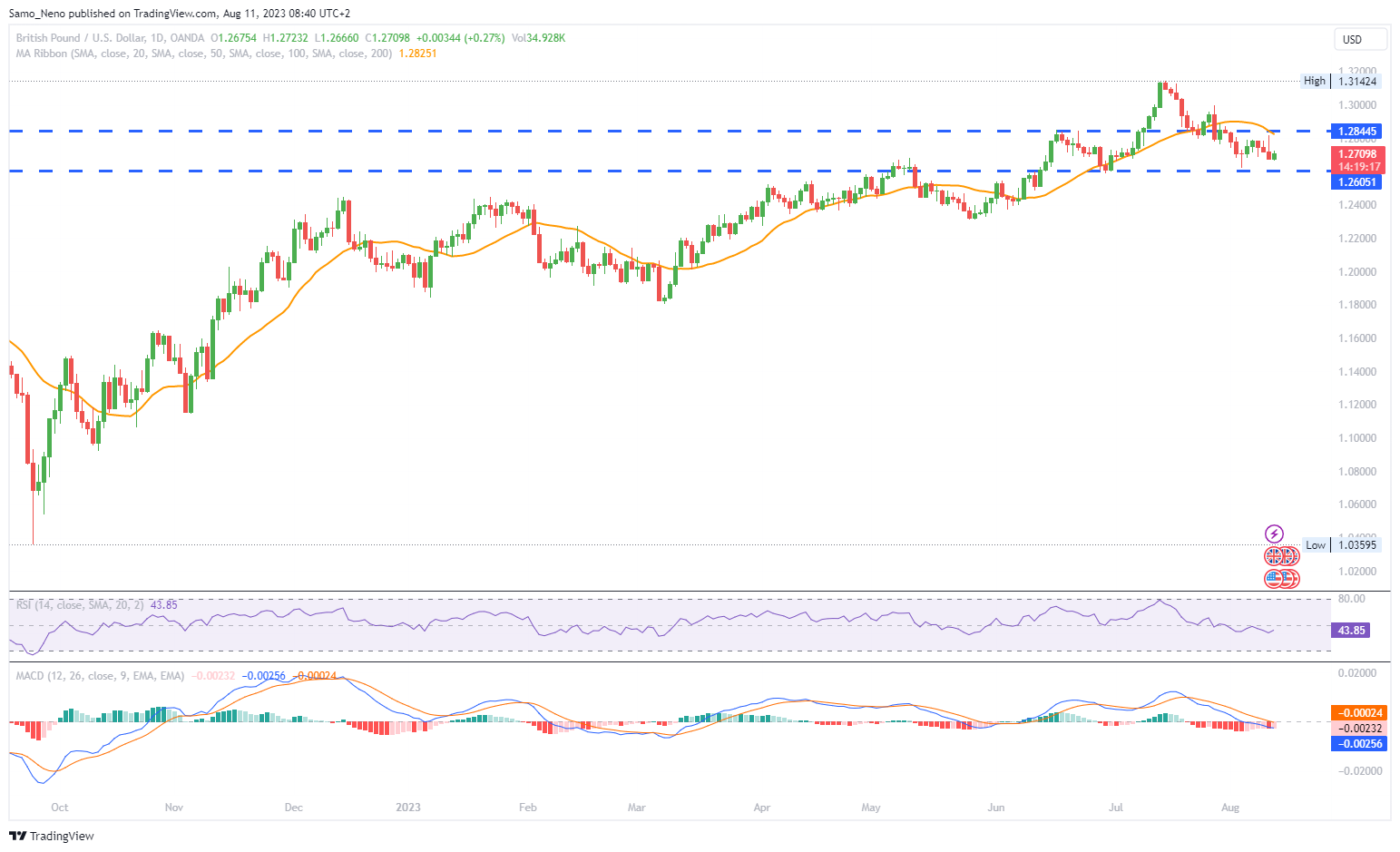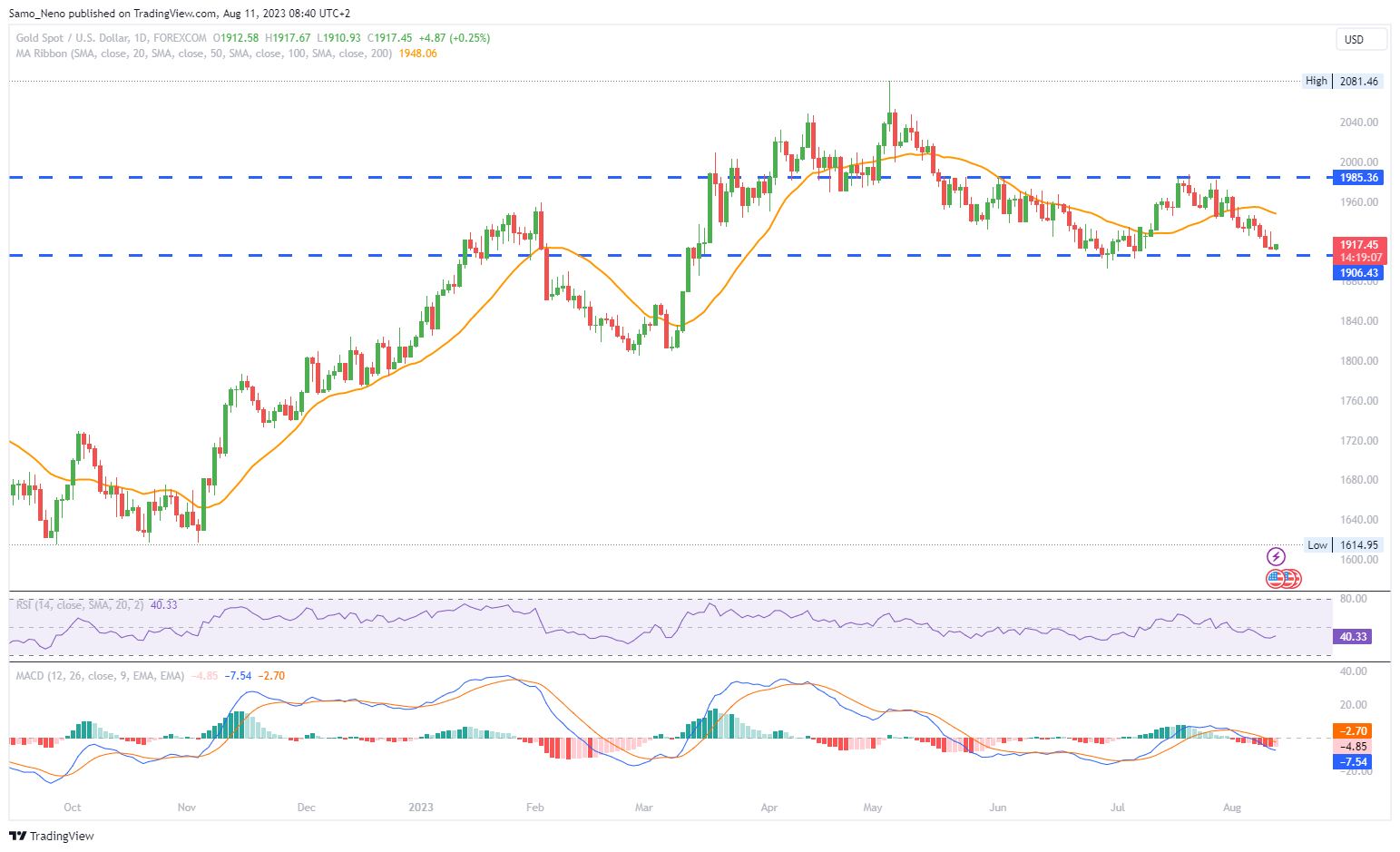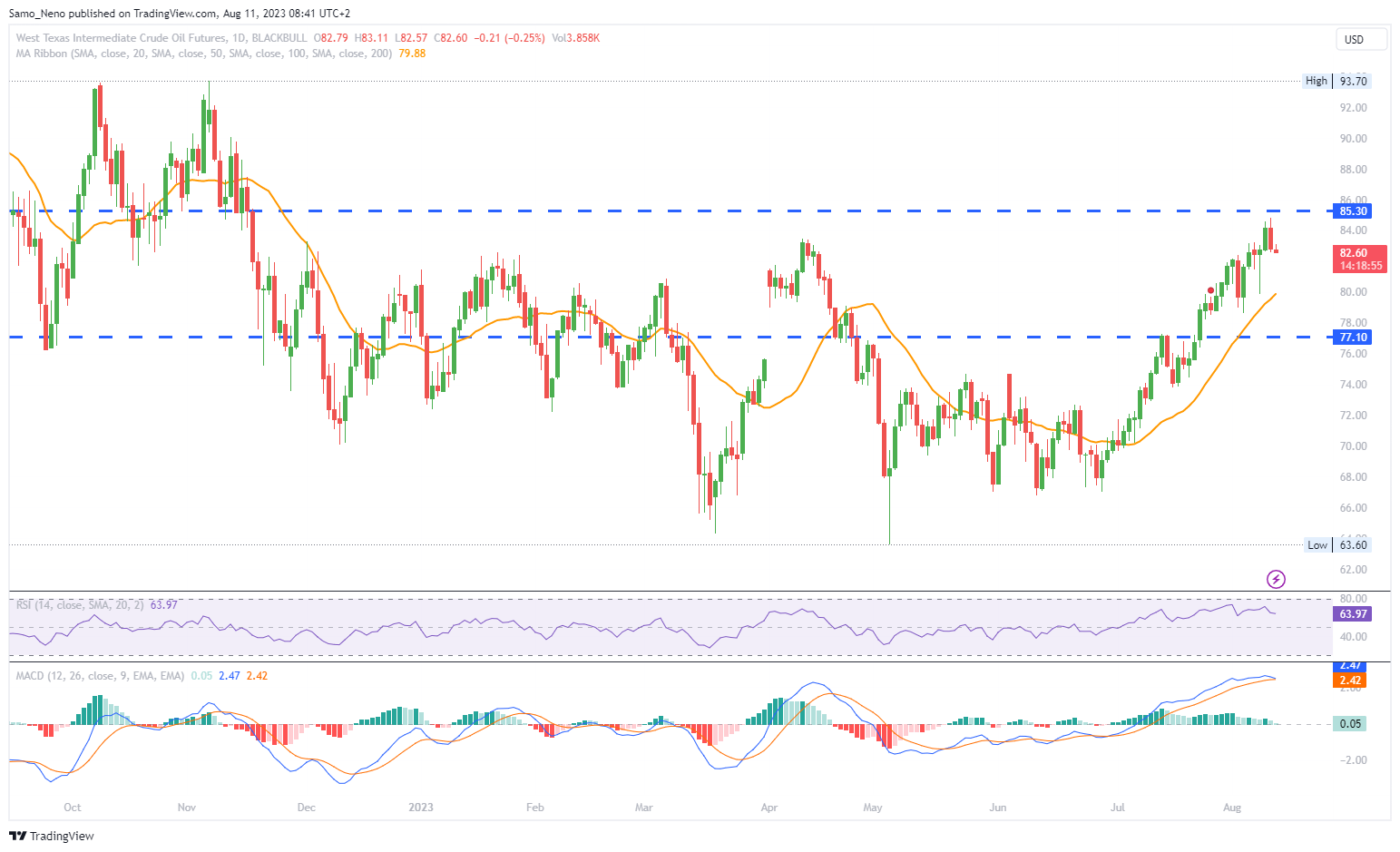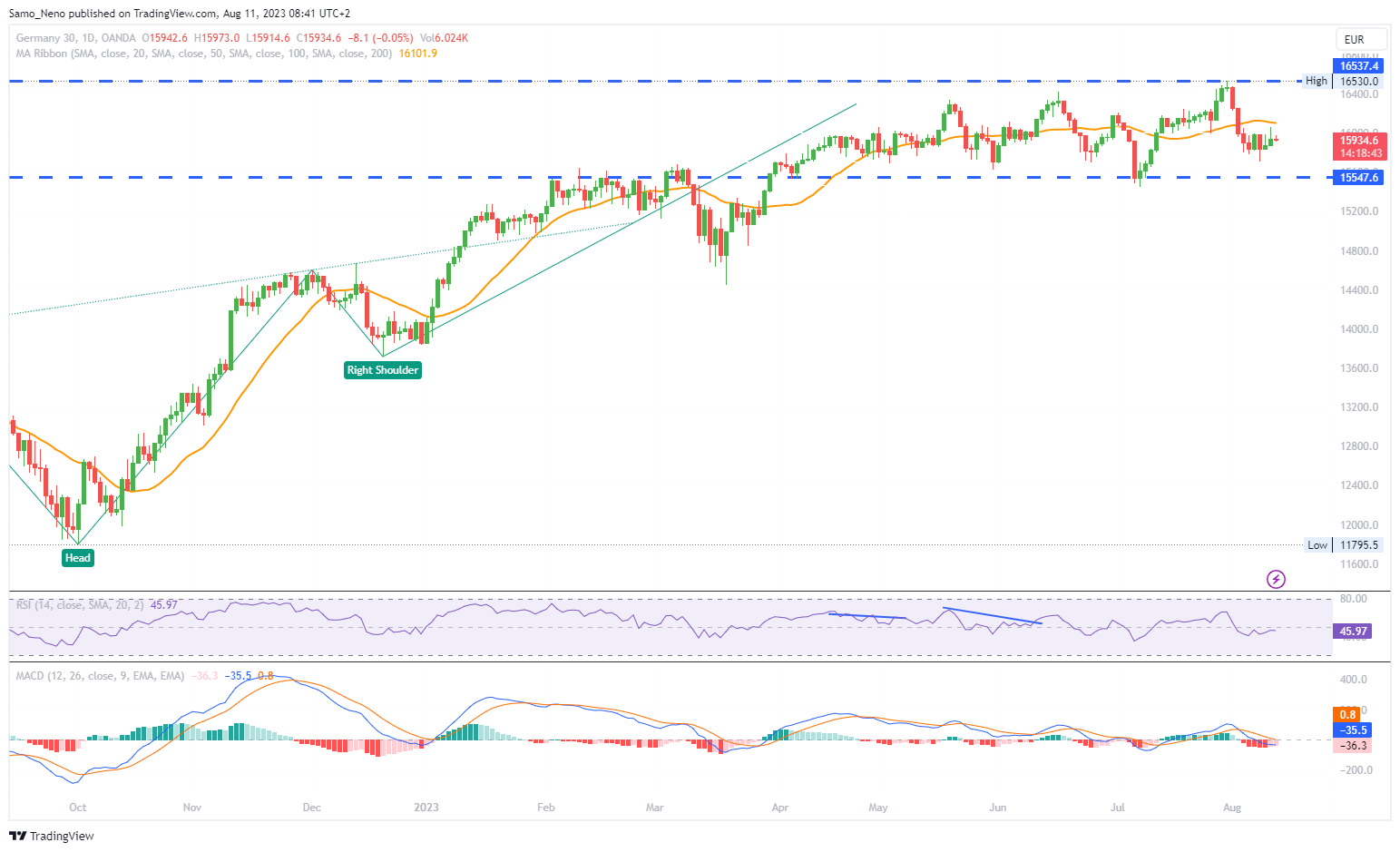EURUSD
- EUR/USD has been engaged in a range-bound trading pattern this week; with its movements influenced by a descending trend line it has been testing in recent sessions. The pair's price action has been characterized by a struggle to break free from this range.
- Despite a marginal upward movement on Thursday, the EUR/USD remained under pressure and significantly distant from its peak levels. The pair experienced a spike to 1.1068 following the release of U.S. CPI data, temporarily surpassing the 20-day Simple Moving Average (SMA) yet failing to sustain this momentum.
- Influential report revealed an increase in Initial Jobless Claims to 248,000, exceeding the market consensus of 230,000. This data point contributed to shaping the market sentiment during the analyzed period.
- Friday is expected to bring more U.S. inflation data, specifically the Producer Price Index. The anticipated rebound in the annual rate from 0.1% to 0.7% is poised to impact market dynamics. Additionally, Europe is set to release final readings of July inflation figures for France and Spain.
- The price action in EUR/USD continues to hinge on the dynamics of the U.S. dollar. While an improvement in risk sentiment and signs of deflation in the U.S. could weaken the dollar, the prevailing momentum indicates a tendency towards dollar strength.
Closing statement: EUR/USD's performance during this period highlighted its struggle within a range-bound trading pattern. Despite marginal upward movement and an attempt to break free from the descending trend line, the pair remained under pressure and distant from its peak levels. A mix of economic data, including U.S. jobless claims and forthcoming inflation reports, shaped market sentiment, while ongoing momentum pointed towards dollar strength as a key driving factor.
GBPUSD
- GBP/USD began Friday's European morning trading session in positive territory, hovering around the 1.2700 level. This positive trend follows recent market developments and key economic indicators.
- The UK displayed robust economic indicators, with Q2 Quarterly GDP surpassing expectations at 0.2% compared to the projected 0%. Additionally, UK GDP for June arrived at 0.5% MoM, beating the forecasted 0.2%. These favorable economic data points contributed to the currency pair's performance.
- Following the release of the CPI report, the US Dollar initially experienced a fall but gained strength during the American trading session. This shift was driven by deteriorating market sentiment and higher U.S. Treasury yields.
- The U.S. Dollar Index was on track to achieve its highest daily close in a month, positioned above the 102.50 mark. This elevation indicated a strengthening trend in the U.S. dollar during the analyzed period.
- While the near-term outlook implies a possibility of the pair continuing its upward trajectory, investors may not solely rely on technical readings. Instead, their reactions could be shaped by the U.S. inflation data set to be released later in the day.
| SMA (20) | Slightly Falling |
|
||
| RSI (14) | Slightly Rising |
|
||
| MACD (12, 26, 9) | Neutral |
Closing statement:GBP/USD exhibited positive trading activity around the 1.2700 level during the European morning on Friday. Robust UK economic data, including Quarterly GDP and June GDP, provided a favourable backdrop for the currency pair's performance. The U.S. Dollar's dynamics, initially affected by the CPI report, experienced a turnaround as market sentiment weakened and U.S. Treasury yields increased. The U.S. Dollar Index's strength, potentially marking its highest daily close in a month, underscored the U.S. dollar's robustness. While the short-term trajectory suggested potential upward movement, the pair's future direction could be influenced by the forthcoming U.S. inflation data.
GOLD
- Gold prices remained close to their one-month lows on Friday, despite the release of cooler-than-anticipated U.S. inflation figures. This situation has led to gold experiencing its most challenging week in seven, due to the prevailing strength of the U.S. dollar and bond yields.
- The U.S. inflation data showed that the annual Consumer Price Index (CPI) rate for July reached 3.2%, slightly below the market's consensus of 3.3%.
- The monthly basis CPI recorded a 0.2% rise. Although this marked the first uptick in inflation in 13 months, the overall report resembled levels observed before the pandemic outbreak.
- The increase in the annual rate, while showing an acceleration, does not necessarily signal the conclusion of the deflationary trend.
- A senior analyst at City Index, Matt Simpson, noted that despite the moderate nature of the inflation figures, core CPI still remained at 4.7%, a level that doesn't signify ideal economic conditions.
| SMA (20) | Slightly Falling |
|
|
| RSI (14) | Slightly Rising |
|
|
| MACD (12, 26, 9) | Falling |
|
|
Closing statement: Gold prices maintained their near one-month low position on Friday, as the precious metal grappled with the strength of the U.S. dollar and robust bond yields. Despite cooler-than-expected U.S. inflation data, gold's downward trajectory continued, marking a challenging week for the commodity amid ongoing worries about inflation and economic dynamics.
CRUDE OIL
- Crude oil prices remained mostly unchanged on Friday, influenced by a stronger U.S. dollar following the release of in-line U.S. inflation data for July. However, the OPEC's positive outlook on global demand continued to provide some support.
- Prices were on track to record a seventh consecutive week of gains, although these gains were notably reduced after the release of the inflation data.
- The U.S. dollar strengthened after the inflation data release, adding pressure to oil prices as commodities are often inversely correlated with the dollar's strength.
- Mounting concerns about China's economic conditions also exerted pressure on oil markets, particularly due to recent data reflecting a worsening economic landscape in the largest oil-importing country.
- The Organization of Petroleum Exporting Countries (OPEC) reported a substantial reduction in production during July, largely attributable to significant cuts made by key producers such as Saudi Arabia and Russia.
| SMA (20) | Rising |
|
|
| RSI (14) | Slightly Falling |
|
|
| MACD (12, 26, 9) | Slightly Falling |
|
Closing statement:Crude oil prices held relatively steady on Friday, influenced by a strengthening U.S. dollar post the release of U.S. inflation data. Despite this, oil prices were set to mark a seventh consecutive week of gains, although the impact of the dollar's strength and concerns about China's economy tempered these gains. The OPEC's production cuts continued to play a significant role in shaping the market's dynamics.
DAX
- Germany's stock market witnessed gains on Thursday, primarily led by the Insurance, Consumer & Cyclical, and Financial Services sectors, which contributed to the positive performance of shares.
- At the close in Frankfurt, the DAX index saw a rise of 0.91%, the MDAX index advanced by 1.10%, and the TecDAX index increased by 0.59%.
- Among DAX’s top performers, Allianz SE VNA O.N. stood out, surging by 4.90%, equivalent to 10.50 points, and closing at 225.00. Fresenius SE & Co KGAA O.N. added 4.15%, or 1.19 points, reaching an end value of 29.86. Hannover Rueck SE also witnessed gains, with a rise of 4.12% or 8.00 points, ending the session at 202.40.
- Conversely, Siemens AG Class N experienced a decline of 4.79%, losing 7.02 points, to settle at 139.46. Siemens Energy AG dropped by 3.11%, or 0.44 points, closing at 13.56. Qiagen NV also faced a decrease of 1.78% or 0.73 points, with its closing value at 40.19.
- Shares of Fresenius SE & Co KGAA O.N. reached a 52-week high, climbing by 4.15%, or 1.19 points, and concluding the session at 29.86.
| SMA (20) | Slightly Falling |
| |
| RSI (14) | Slightly Rising |
| |
| MACD (12, 26, 9) | Falling |
|
|
Closing statement: Germany's stock market exhibited a positive trend on Thursday, with gains propelled by select sectors. Notable stock performances were observed, particularly in Allianz SE VNA O.N., Fresenius SE & Co KGAA O.N., and Hannover Rueck SE. Conversely, Siemens AG Class N and Siemens Energy AG faced declines.




